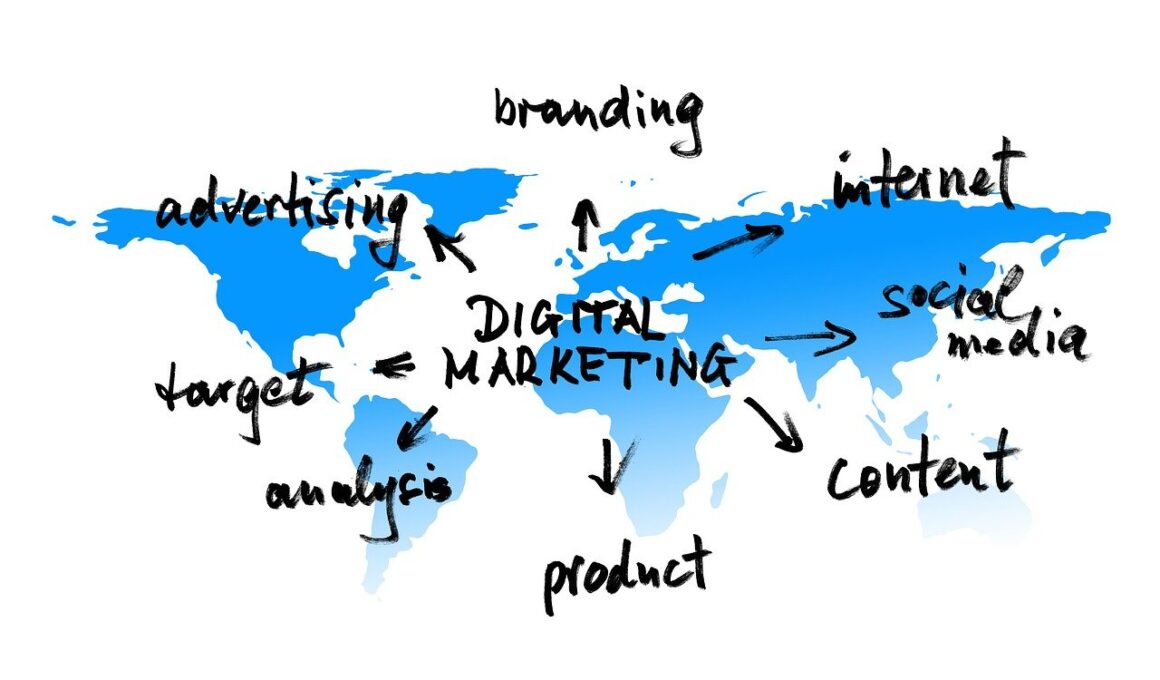Cost-Effectiveness of Paid vs Organic Growth in Brand Awareness Marketing
Brand awareness is paramount for companies seeking to expand their reach and customer base. In this marketing landscape, understanding the differences between paid and organic growth strategies is essential. Paid growth methods typically involve investments in advertising through various channels, such as social media, search engines, and display ads. Brands invest significantly in these methods to generate immediate visibility. Conversely, organic growth relies on creating high-quality content, optimizing search engine strategies, and leveraging social media engagement to foster a genuine connection with potential customers. This strategy may deliver slower results but often leads to engaged audiences. Companies must weigh the quick returns of paid campaigns against the enduring benefits of organic growth. While paid strategies can impact brand visibility in the short term, organic growth helps in establishing lasting trust among consumers. Balancing these approaches effectively can enhance a brand’s overall presence, leading to sustainable success over time. Striking this balance necessitates careful consideration of budget allocation and clear marketing objectives to maximize returns and visibility in a competitive market.
When contemplating the cost-effectiveness of paid versus organic growth in brand awareness campaigns, certain key factors must be reviewed. Paid advertising can deliver rapid results, increasing visibility almost instantly. However, this comes at a significant financial cost, which may not always yield a proportional return on investment. In contrast, organic strategies, which include leveraging content marketing and SEO efforts, build audience trust over time, although they typically require a longer commitment before noticeable results are achieved. This involves creating substantial value through engaging content, and sustaining visibility through consistent interaction with the audience. To improve cost-effectiveness, brands should consider investing in both approaches, allocating more budget towards paid ads until organic efforts gain momentum. The metrics for evaluating success also differ. Paid campaigns can be tracked through immediate metrics like clicks and conversions, while organic growth relies on metrics like engagement and brand loyalty, which may take longer to measure. Thus, comprehensive analysis and strategic planning are critical for deciding where to allocate marketing funds effectively, balancing between urgency and sustained growth.
Advantages of Paid Growth Strategies
Paid growth strategies often offer numerous advantages, making them appealing for businesses seeking to enhance brand awareness quickly. The foremost benefit is speed; paid ads can generate visibility almost instantly, positioning brands in front of target audiences without delay. This is crucial for companies launching new products or entering competitive markets. Through targeted advertising, businesses reach specific demographics, maximizing the relevance of their campaigns. Paid strategies also provide measurable results through analytics tools, allowing businesses to gather insights on consumer behavior, optimizing future campaigns. Additionally, platforms like Google Ads and Facebook Ads offer various targeting options, letting brands connect with engaged audiences. Consistently investing in paid growth can lead to repeat customers who have been positively influenced by ad exposure. However, establishing a solid foundation through organic growth remains vital to a transformative marketing strategy. Businesses should maintain a balance, utilizing paid campaigns to accelerate their visibility while simultaneously developing a robust organic presence. This dual approach ensures immediate engagement and long-lasting brand loyalty, critical for navigating saturated markets and achieving sustainable competitive advantages.
On the other hand, organic growth strategies offer unique advantages that can profoundly impact brand awareness over time. Although it takes longer to produce results, brands benefit from a more substantial, loyal audience as organic tactics focus on building genuine relationships. High-quality content marketing encourages sharing and organic reach, allowing businesses to gain visibility without ongoing direct costs associated with paid advertising. Additionally, search engine optimization (SEO) enhances website visibility, leading to sustained traffic and potentially lower customer acquisition costs in the long run. Consumers are often more receptive to organic content, which can significantly improve brand perception and credibility. This process fosters trust, as audiences feel they are engaging with authentic voices rather than paid advertisements. Furthermore, the longevity of organic content can result in continued visibility and engagement long after its initial publication; evergreen content continues to attract traffic indefinitely. By focusing on nurturing relationships, businesses can cultivate brand advocates who share their positive experiences. Therefore, investing time and resources into organic growth fosters a more sustainable brand presence, ultimately balancing the reliance on both paid and organic growth strategies.
Combining Paid and Organic Strategies
The most effective brand awareness campaigns often utilize a combination of both paid and organic strategies. This synergistic approach allows businesses to benefit from the strengths of each method while mitigating the weaknesses. Paid advertisements create immediate reach and engagement potential, which is particularly beneficial for new product launches or seasonal promotions. Meanwhile, organic growth strategies work behind the scenes to build a solid foundation of trust and loyalty over time. To achieve the best results, brands should first establish their organic presence, ensuring they have quality content that resonates with their audience. Following this, integrating paid campaigns can amplify the message, reinforcing the brand’s visibility in key markets. An effective marketing strategy should focus on targeting specific audiences with tailored content that aligns with user interests and needs. Moreover, retargeting strategies in paid campaigns can remind users of previously engaged organic content, thus creating a seamless marketing experience. Understanding when and how to intertwine these approaches can significantly enhance overall campaign effectiveness, leading to improved brand awareness and increased engagement.
Tracking success in brand awareness campaigns through the lens of paid versus organic growth requires a nuanced approach. Different metrics provide insights into how each strategy performs. For paid campaigns, key performance indicators (KPIs) such as click-through rates (CTR), cost-per-click (CPC), and conversion rates are vital for assessing immediate success. In contrast, organic strategies should focus on engagement metrics, such as shares, comments, and the growth rate of followers. These indicators reflect the level of trust and connection consumers feel towards the brand. Additionally, monitoring website traffic sources can highlight how successful organic efforts are engaging audiences over time. Setting clear goals for these campaigns can promote focused analysis, ensuring businesses understand which areas are delivering the most value. A/B testing can also refine both paid and organic strategies, providing tangible results and insights. This data-driven approach fosters a continuous improvement mindset. By leveraging analytics effectively, brands can continually optimize their marketing strategies, leading to sustainable growth through informed decisions based on performance. Integrating these insights is pivotal for long-term impact in the brand awareness arena.
Conclusion: Making an Informed Decision
In conclusion, making an informed decision regarding the use of paid verses organic growth requires a comprehensive understanding of each approach’s advantages and challenges. Brands need to evaluate their immediate goals, resources, and capabilities when deciding how to allocate their marketing budgets effectively. Paid growth strategies are attractive for their rapid visibility and measurability but come with ongoing costs. In comparison, organic strategies promote authentic engagement, trust, and long-term benefits, although they require a more significant time commitment. Understanding the synergy between these two tactics can guide brands toward a more holistic marketing strategy. Ideally, businesses should develop a blended approach that leverages both paid and organic tactics to maximize brand awareness. As companies adjust to the dynamic marketing landscape, they should remain flexible, continuously monitoring performance metrics and consumer engagement. This flexibility enables brands to pivot strategies when necessary, ensuring a robust presence in a competitive market. Ultimately, consistently nurturing both growth types can help businesses achieve enduring success in building awareness and establishing a loyal customer base.
This final analysis emphasizes the importance of adaptability within marketing strategies. Organizations that remain agile tend to navigate changing market conditions and consumer behaviors. By being proactive, businesses can transition between paid and organic strategies as required, optimizing resource allocation to maintain relevance and visibility. Moreover, continuous learning about audience preferences can significantly enhance growth approaches; companies should regularly gather feedback, conducting surveys or interviews to refine messaging and content. Investing in skilled marketing teams to drive both organic and paid efforts will also improve overall effectiveness. Training staff in the latest digital marketing trends, tools, and techniques will empower brands to make informed decisions. A culture of collaboration between digital marketing channels can further facilitate the alignment needed for success. Overall, understanding the interplay between paid and organic growth, along with efficient execution based on analytical insights, leverages brand awareness. Businesses acknowledging the complexities of these strategies emerge more resilient and better positioned to capitalize on market opportunities, ultimately reaping the rewards of both immediate gains and lasting relationships. Therefore, taking a holistic approach remains fundamental for sustaining growth in brand awareness marketing.


